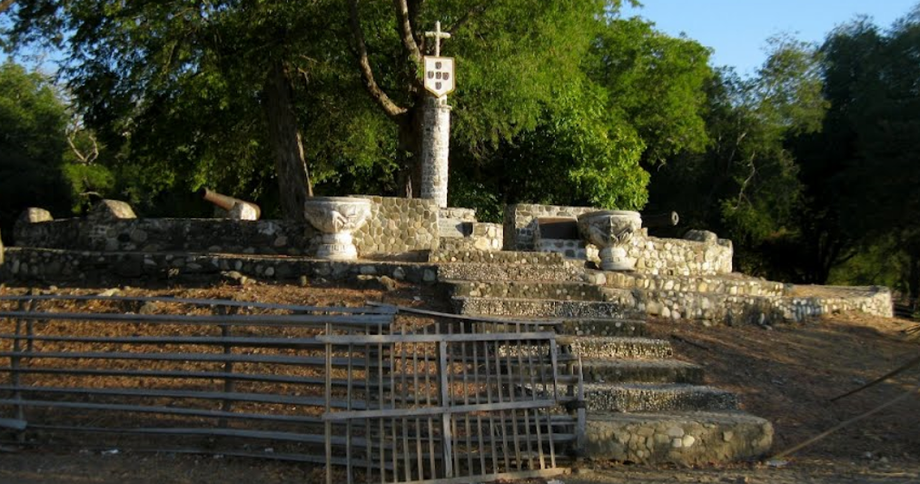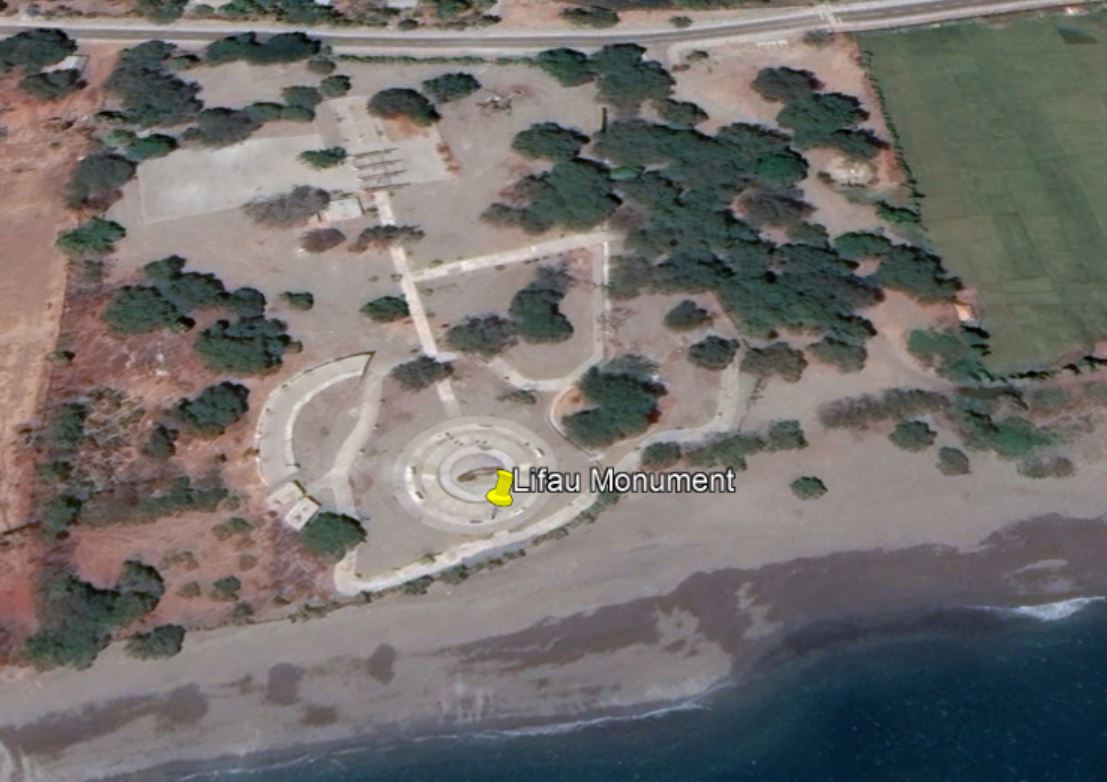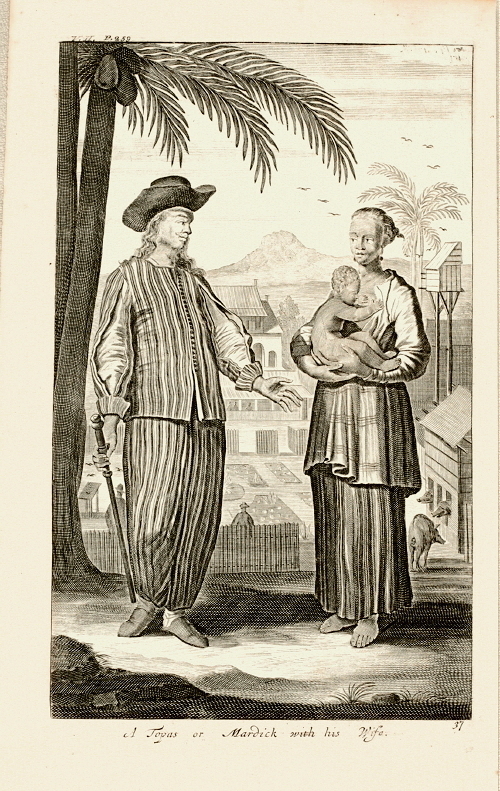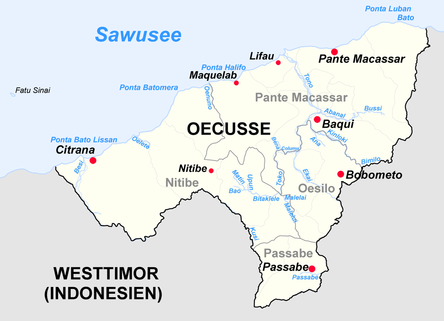Timor & Oecussi
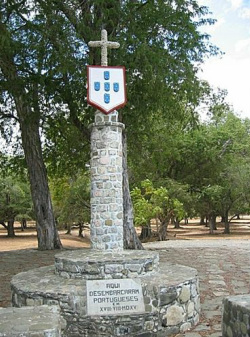
{Extract from History of Timor - see Pdf below} Relative to
the seventeenth Century, little documentary evidence remains or has been
uncovered on the Portuguese in Timor in the sixteenth Century, the Century of
discovery, albeit, not yet permanent European settlement on Timor. Whether this
owes to Portuguese secrecy or, as the Portuguese writer Porfirio Campos asserts,
allegations of criminal negligence on the part of one Governor in allowing fire
to destroy the Dili archives in 1779.
Dutch scholars have established that, at the time of the Javanese empire of Srivijaya (circa tenth century AD), sandalwood from Timor was transported to the Malacca Straits area and then via the monsoon-controlled trade routes to India and China. Crawfurd, citing local "annals", observed that as early as 1332 the Javanese along with Malays frequented Ternate in the Spice Islands as the "first link in the long commercial chain" reaching from the Moluccas to Europe. There is no question that sandal from Timor entered this chain as a commodity of Indian or Arab trade. We also know from such Chinese sources as the 1225 accounts of the Chinese Inspector of Overseas Trade Chau-Ju-Kua, that Timor was regarded as a place rich in sandalwood. Ming dynasty records are more eloquent on the subject, describing Timor as an island covered with the aromatic wood and having at least twelve landing places where Chinese merchants made their landfall. Also from this time a direct sea route to Timor was opened up by Chinese navigators through the Sulu and Celebes seas to the Moluccas. From his reading of Chinese sources on this question, Roderich Ptak has established that the earliest extant Chinese description of Timor is that contained in the Tao-i chin-lueh (circa 1350).
Dutch scholars have established that, at the time of the Javanese empire of Srivijaya (circa tenth century AD), sandalwood from Timor was transported to the Malacca Straits area and then via the monsoon-controlled trade routes to India and China. Crawfurd, citing local "annals", observed that as early as 1332 the Javanese along with Malays frequented Ternate in the Spice Islands as the "first link in the long commercial chain" reaching from the Moluccas to Europe. There is no question that sandal from Timor entered this chain as a commodity of Indian or Arab trade. We also know from such Chinese sources as the 1225 accounts of the Chinese Inspector of Overseas Trade Chau-Ju-Kua, that Timor was regarded as a place rich in sandalwood. Ming dynasty records are more eloquent on the subject, describing Timor as an island covered with the aromatic wood and having at least twelve landing places where Chinese merchants made their landfall. Also from this time a direct sea route to Timor was opened up by Chinese navigators through the Sulu and Celebes seas to the Moluccas. From his reading of Chinese sources on this question, Roderich Ptak has established that the earliest extant Chinese description of Timor is that contained in the Tao-i chin-lueh (circa 1350).
|
The Portuguese Heritage site HPIP https://hpip.org comes up as not secure - there is also a Facebook page
|
The capital of Oecusse is Pante Macassar, also called Oecussi Town, or formerly, in Portuguese Timor, Vila Taveiro. Originally Ambeno was the name of the former district and Oecussi its capital.[2]
"Oe-Kussi" would mean something like "water pot".[3][5] -
For the Portuguese traders in sandalwood, Lifau was a convenient place to land since it was situated to the south of their base in the Solor Archipelago. Wiki
"Oe-Kussi" would mean something like "water pot".[3][5] -
For the Portuguese traders in sandalwood, Lifau was a convenient place to land since it was situated to the south of their base in the Solor Archipelago. Wiki
‘At Lifau you will see a monument standing by the beach and beside it is an old canal that is never touched by water….a group of Portuguese catholic priests arrive at the port by a very nice looking sailing boat decorated with crosses. Feeling that their boat would be unsafe if it remains in the water, the Portuguese government at the port forced the locals to dig a canal through which a ship will have to sail from the shore to the foot of the rock on which stands a luxurious European style building – the governor’s office of Lifau, Oecusse.
Day by day, week by week, the mission goes on…. “Because of the boat of the white priests we have to leave our families, rice fields, and have almost sacrificed our lives here. He has to pay all this pain”,
That afternoon, when a white priest come alone to see the canal, the furious people kidnap him and take him the bush, away from his white comrades. There, they take his life away by separating his head from his body. It is really a tragic moment. The beach, the rocky hills, and the tamarind trees are the speechless eyewitnesses of this murder.
As many people believe that every padre is holy and is a man of God, those men want to prove whether or not it is true. Seko takes a piece of black cloth that he has prepared and wraps a brown rock held by Juniuk. Am Kelu, the oldest of them, says some magic words in a deep voice: “If it is true that you are a holy person, a man of God, let the stone that we wrap resemble to your face and head”. No-one will believe that soon their prayer is answered. There comes a miracle from heaven, the black rock turns to the face and head of the priest.
The head-like rock is then put under a tamarind tree. Around it there are stones forming a cemetery. Nobody knows who started visiting and lighting candles at that place. Years later, the priest’s bones are found and then put in a glass box, just next to the ruins of the governor’s office.
After the murder of the Portuguese priest, the digging of the canal seems to be completely stopped.’
Day by day, week by week, the mission goes on…. “Because of the boat of the white priests we have to leave our families, rice fields, and have almost sacrificed our lives here. He has to pay all this pain”,
That afternoon, when a white priest come alone to see the canal, the furious people kidnap him and take him the bush, away from his white comrades. There, they take his life away by separating his head from his body. It is really a tragic moment. The beach, the rocky hills, and the tamarind trees are the speechless eyewitnesses of this murder.
As many people believe that every padre is holy and is a man of God, those men want to prove whether or not it is true. Seko takes a piece of black cloth that he has prepared and wraps a brown rock held by Juniuk. Am Kelu, the oldest of them, says some magic words in a deep voice: “If it is true that you are a holy person, a man of God, let the stone that we wrap resemble to your face and head”. No-one will believe that soon their prayer is answered. There comes a miracle from heaven, the black rock turns to the face and head of the priest.
The head-like rock is then put under a tamarind tree. Around it there are stones forming a cemetery. Nobody knows who started visiting and lighting candles at that place. Years later, the priest’s bones are found and then put in a glass box, just next to the ruins of the governor’s office.
After the murder of the Portuguese priest, the digging of the canal seems to be completely stopped.’
| |||||||||||||||||||||||||||||||
